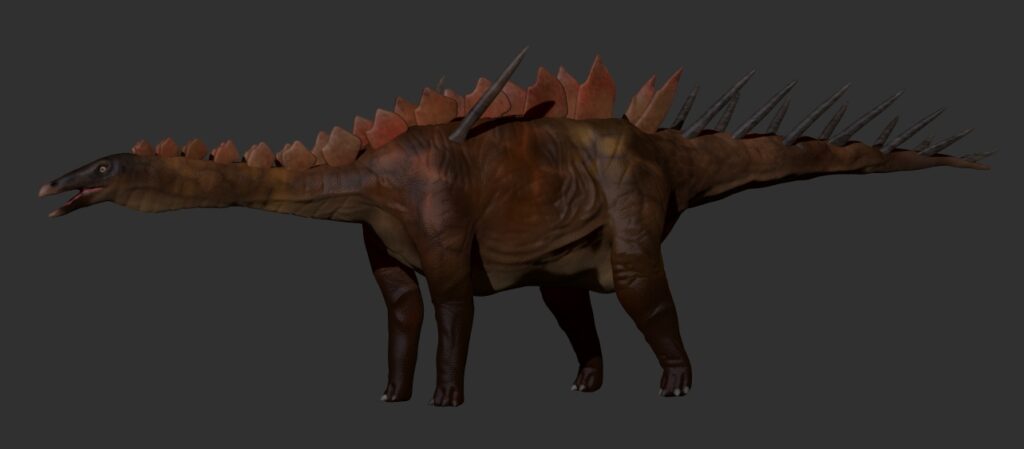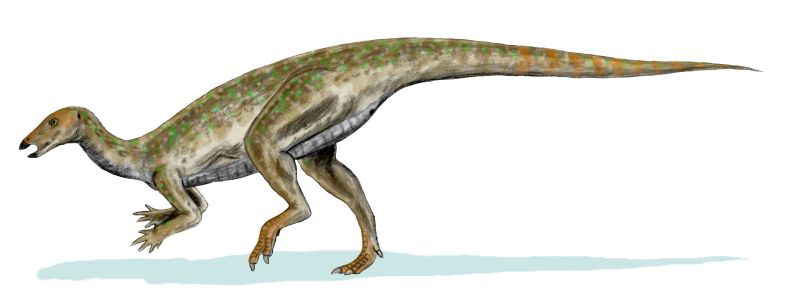When we think of dinosaurs, we often imagine scaly giants with razor-sharp teeth or massive herbivores with long necks. However, the dinosaur world was incredibly diverse, and some species developed truly remarkable adaptations. Among these unusual prehistoric creatures was a group of dinosaurs that evolved defensive features remarkably similar to modern porcupines. These dinosaurs, primarily from the stegosaur and ankylosaur families, showcased an impressive array of spikes, quills, and plates that served as protection against predators. This fascinating convergent evolution between dinosaurs and modern mammals demonstrates how similar survival strategies can emerge across vastly different animal groups separated by millions of years.
The Bajadasaurus: Nature’s Prehistoric Pincushion

Bajadasaurus pronuspinax, discovered in Patagonia, Argentina, featured some of the most dramatic spines of any dinosaur ever found. This unusual sauropod possessed extraordinarily long, forward-curving neural spines that extended from its neck vertebrae like a crown of needles. Paleontologists believe these spines, which could reach up to a meter in length, served primarily as a defensive mechanism against predators. The name “Bajadasaurus” translates to “downslope lizard,” referring to the location where it was discovered, while “pronuspinax” means “bent spine forward.” Living approximately 140 million years ago during the Early Cretaceous period, this remarkable dinosaur would have presented a formidable sight with its forest of protective spines, making it resemble a gigantic prehistoric porcupine.
Kentrosaurus: The African Spiky Dinosaur
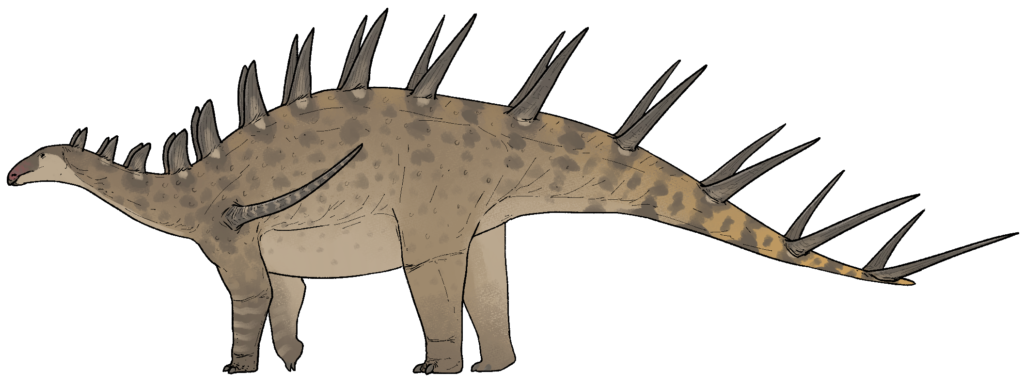
Kentrosaurus was a stegosaur that roamed what is now Tanzania during the Late Jurassic period around 152 million years ago. Unlike its more famous relative Stegosaurus, Kentrosaurus featured an even more impressive array of defensive spikes. Its body was armed with pairs of long, sharp spines running along its back and tail, with particularly formidable spikes on its shoulders and hips that could reach over a foot in length. The name Kentrosaurus aptly means “pointed lizard,” referencing its porcupine-like appearance. Standing at about 3.5 meters (11.5 feet) long, this herbivore used its forest of spikes as a passive defense system against large predators like the Allosaurus that shared its ecosystem. The arrangement of these spikes made Kentrosaurus effectively impossible to attack from above and created a defensive perimeter around its body.
Polacanthus: The Many-Spined Dinosaur

Polacanthus, whose name means “many spines,” was an ankylosaur that lived during the Early Cretaceous period, approximately 130-125 million years ago in what is now England. This medium-sized dinosaur, measuring around 5 meters (16 feet) in length, had one of the most elaborate defensive structures of any dinosaur. Its back was covered with numerous sharp spines of varying lengths, creating a protective “forest” similar to a porcupine’s quills. Additionally, Polacanthus featured a distinctive solid shield of fused bone (called a sacral shield) over its hips and pelvic region, providing extra protection. The combination of this bony shield and the forest of spines would have made Polacanthus extraordinarily difficult for predators to attack successfully, as almost every angle of approach would result in the attacker impaling itself on one or more sharp projections.
Convergent Evolution: Dinosaurs and Modern Porcupines

The similarity between certain dinosaurs and modern porcupines represents a fascinating example of convergent evolution—where unrelated species develop similar traits in response to similar environmental pressures. While porcupines use modified hairs (quills) that can detach when a predator makes contact, spiky dinosaurs evolved bony protrusions that remained permanently attached to their bodies. Both adaptations serve the same fundamental purpose: creating a defensive mechanism that makes the animal difficult or dangerous to attack. This parallel adaptation occurred despite the animals being separated by over 60 million years of evolutionary history and belonging to entirely different taxonomic classes (Reptilia for dinosaurs and Mammalia for porcupines). The effectiveness of this defense strategy explains why it has evolved independently multiple times throughout Earth’s history, including in these dramatically different animal groups.
Huayangosaurus: The Early Spiky Innovator

Huayangosaurus is one of the earliest known stegosaurs, living approximately 165 million years ago during the Middle Jurassic period in what is now China. This primitive stegosaur, reaching about 4.5 meters (15 feet) in length, represents an early stage in the evolution of the distinctive spiky defenses that would become more elaborate in later stegosaurs. Huayangosaurus had an impressive array of defensive features, including shoulder spikes, tail spines, and small plates running along its back. What makes this dinosaur particularly interesting to paleontologists is that it shows the early development of the defensive adaptations that would become more specialized in its later relatives. The relatively small plates and more numerous spikes of Huayangosaurus created a porcupine-like silhouette that would have deterred even the largest predators of its time from attacking it directly.
Nodosaurus: The Knobby Armored Dinosaur
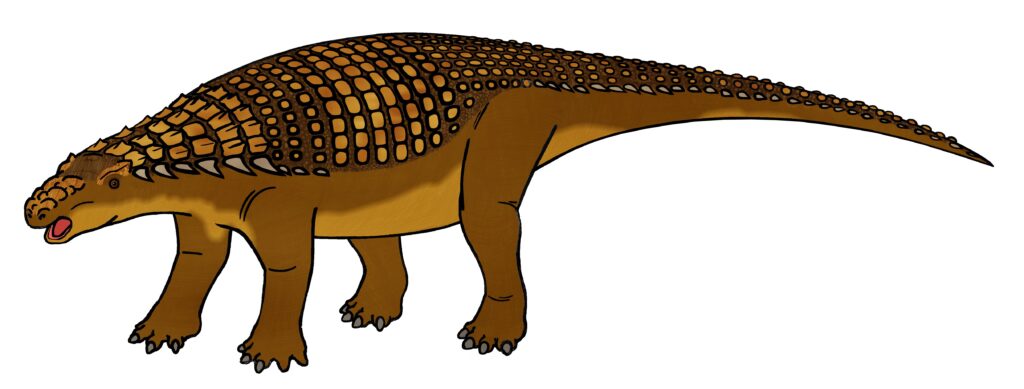
Nodosaurus is an ankylosaur that lived during the Late Cretaceous period, approximately 95-90 million years ago, in what is now North America. Its name, meaning “knobby lizard,” perfectly describes its appearance, as its body was covered with large, rounded knobs and spikes embedded in its skin armor. Unlike the flatter armor of some other ankylosaurs, Nodosaurus featured more pronounced spiky projections across its back and sides, creating a formidable defensive barrier reminiscent of a porcupine’s quills. Although it lacked the tail club found in later ankylosaurs, Nodosaurus compensated with more extensive body armor. First discovered in Wyoming in the 1880s, this dinosaur represents one of the earliest ankylosaurs known from relatively complete remains. Its defensive features were so effective that they likely allowed it to coexist with formidable predators like Tyrannosaurus rex without relying on speed for escape.
Miragaia: The Long-Necked Spiny Dinosaur
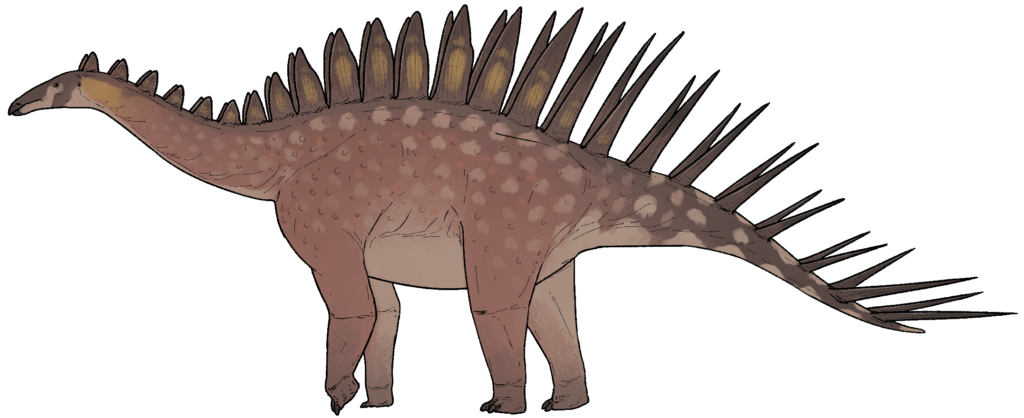
Miragaia longicollum was an unusual stegosaur that lived in what is now Portugal during the Late Jurassic period, approximately 150 million years ago. What makes Miragaia particularly remarkable is its extremely long neck, which contained more vertebrae than most other dinosaurs of its kind, combined with an impressive array of defensive spikes. Its name means “wonderful earth” (Miragaia) and “long neck” (longicollum), referencing both its discovery location and distinctive anatomy. Along with its elongated neck, Miragaia possessed pairs of long shoulder spikes and smaller spines running along its back and tail, creating a porcupine-like defensive system. Paleontologists believe the combination of the long neck and defensive spines may have allowed Miragaia to reach vegetation that other herbivores couldn’t access while maintaining effective protection against predators from virtually any angle of attack.
Hesperosaurus: The Western Spiny Dinosaur
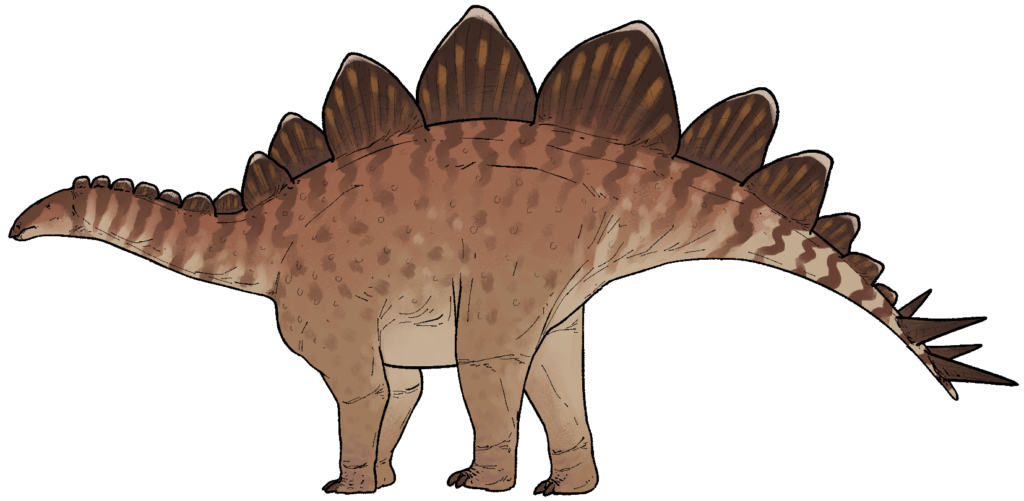
Hesperosaurus lived during the Late Jurassic period, about 156 million years ago, in what is now the western United States. Its name translates to “western lizard,” referring to its discovery location in Wyoming. This stegosaur featured distinctive defensive adaptations that created a porcupine-like appearance, including unusually shaped back plates and sharp tail spikes known as thagomizers. What distinguishes Hesperosaurus from other stegosaurs is the shape of its plates, which were more rounded than the triangular plates seen in Stegosaurus. These plates, combined with sharp tail spikes, created an effective defensive perimeter around the animal. Recent studies of Hesperosaurus fossils have revealed evidence that their plates may have also functioned for thermoregulation, with blood vessels running through them that could help the animal control its body temperature while still providing a spiky, porcupine-like defensive outline that would discourage predator attacks.
Gigantspinosaurus: The Giant-Spined Dinosaur

Gigantspinosaurus sichuanensis, as its name suggests, possessed some of the most enormous spines of any dinosaur ever discovered. This stegosaur lived during the Late Jurassic period, approximately 160-155 million years ago, in what is now China’s Sichuan Province. What makes Gigantspinosaurus truly remarkable are the massive shoulder spines that extended outward from its body, measuring up to 1.5 meters (5 feet) in length – longer than half the height of the dinosaur itself. These enormous spikes, combined with smaller spines along its back and tail, created an unmistakable porcupine-like silhouette. Paleontologists believe these oversized spines served primarily as a visual deterrent to potential predators, creating an optical illusion that made the dinosaur appear much larger and more dangerous than it was. The positioning of these spines would have made it nearly impossible for predators to attack without injuring themselves in the process.
Tuojiangosaurus: China’s Spiky Stegosaur
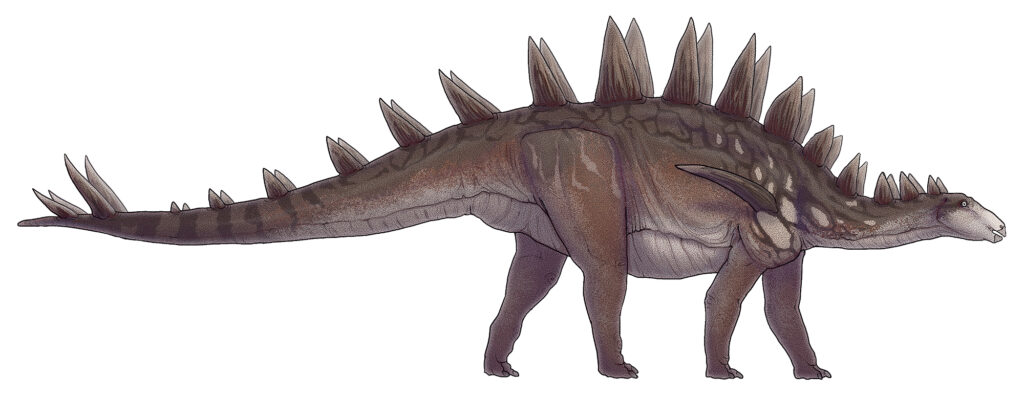
Tuojiangosaurus was a stegosaur that lived in what is now China during the Late Jurassic period, approximately 157-154 million years ago. Named after the Tuojiang River in Sichuan Province, where it was discovered, this dinosaur showcased an impressive array of defensive features that created a distinctly porcupine-like appearance. Tuojiangosaurus had 17 pairs of plates and spikes running along its back, with plates dominating the front portion of its body and transitioning to pointed spikes toward its tail. The tail terminated in four pairs of long, sharp spikes that would have been lethal weapons against any attacking predator. At around 7 meters (23 feet) in length, Tuojiangosaurus represented a medium-sized stegosaur whose defensive adaptations were particularly well-developed. The arrangement of its plates and spikes not only provided protection but also may have played a role in thermoregulation and species recognition, giving this dinosaur multiple benefits from its porcupine-like appearance.
Gastonia: The Spine-Covered Tank
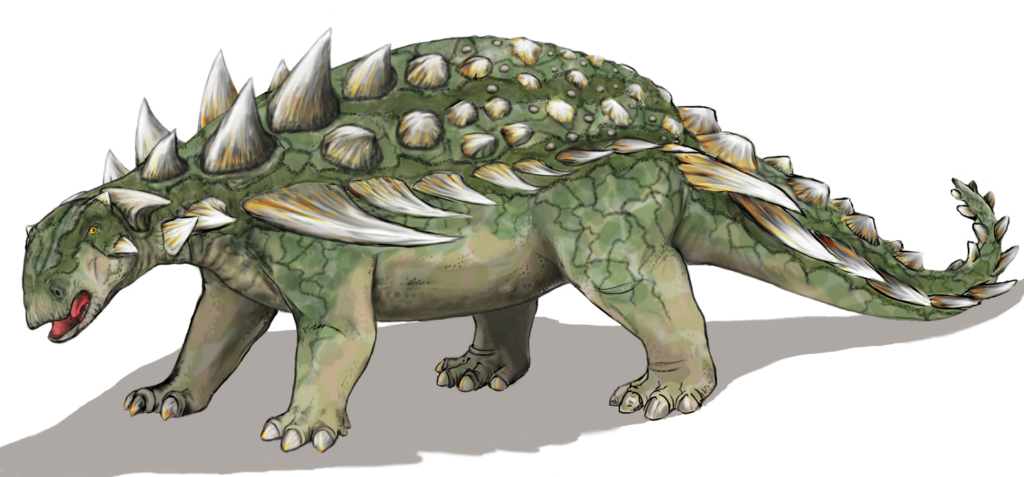
Gastonia burgei was a heavily armored ankylosaur that lived during the Early Cretaceous period, approximately 125 million years ago, in what is now Utah. Named after paleontologist Robert Gaston, this medium-sized dinosaur, measuring about 5-6 meters (16-20 feet) long, was covered from head to tail in an elaborate system of defensive spikes, plates, and scutes. What made Gastonia particularly porcupine-like was its array of long shoulder spikes that projected outward from its body in multiple directions, creating a defensive perimeter that would deter even the most determined predators. Unlike some other ankylosaurs, Gastonia lacked a tail club but compensated with more extensive body armor and spikes. The defensive spikes varied in shape and size across different parts of its body, with some being relatively short and blunt while others were long and sharply pointed. This variation created multiple layers of defense against different types of attacks and predator strategies.
Hylaeosaurus: One of the First Discovered Spiky Dinosaurs

Hylaeosaurus holds a special place in paleontological history as one of the first dinosaurs ever scientifically described and one of the three genera used to define the Dinosauria in 1842. This early ankylosaur lived during the Early Cretaceous period, approximately 140-136 million years ago, in what is now England. Despite being known from relatively fragmentary remains, paleontologists have determined that Hylaeosaurus had rows of spikes extending from its shoulders and running along the sides of its body and tail, creating a distinctly porcupine-like appearance. The name Hylaeosaurus means “woodland lizard,” referring to the forested environment it likely inhabited. At around 5 meters (16 feet) long, this armored dinosaur relied on its passive defenses rather than speed to protect itself from predators. The discovery and study of Hylaeosaurus helped establish early understanding of the remarkable defensive adaptations that evolved in dinosaurs, revealing that spiky, porcupine-like protection systems had ancient origins.
The Function and Evolution of Dinosaur Spines

The elaborate spines, plates, and quills seen in porcupine-like dinosaurs served multiple evolutionary functions beyond just defense. While protection from predators was undoubtedly their primary purpose, research suggests these structures also played important roles in thermoregulation, sexual display, and species recognition. The blood vessels found within many dinosaur plates and spines would have allowed these structures to serve as radiators, helping the animals regulate their body temperature by collecting or dissipating heat as needed. Additionally, the dramatic appearance created by these spines likely served in mate selection, with more impressive displays potentially indicating genetic fitness to potential partners. The evolution of these structures represents a remarkable example of how natural selection can produce elaborate defensive adaptations in response to predation pressure. Over millions of years, these defenses became increasingly specialized and effective, with different dinosaur lineages independently evolving their variations on the spiky, porcupine-like theme.
Conclusion
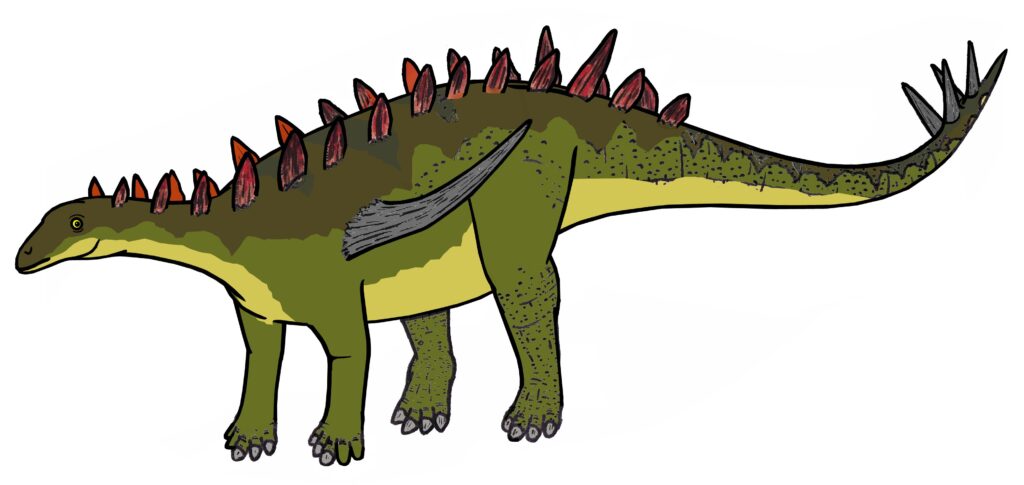
The remarkable similarity between certain dinosaurs and modern porcupines illustrates one of nature’s most fascinating patterns: the independent evolution of similar adaptations in unrelated animals facing similar survival challenges. From the massive shoulder spines of Gigantspinosaurus to the dense armor of Gastonia, these dinosaurs developed an impressive array of defensive structures that would have made any predator think twice before attacking. While separated by millions of years and belonging to entirely different evolutionary lineages, both these ancient reptiles and modern mammals arrived at a similar solution to the problem of predation—cover yourself in spikes. This convergent evolution demonstrates the effectiveness of this defensive strategy across vastly different periods and animal groups. The porcupine-like dinosaurs remind us that the natural world repeatedly discovers effective survival strategies, often resulting in surprisingly similar adaptations across otherwise unrelated organisms.

